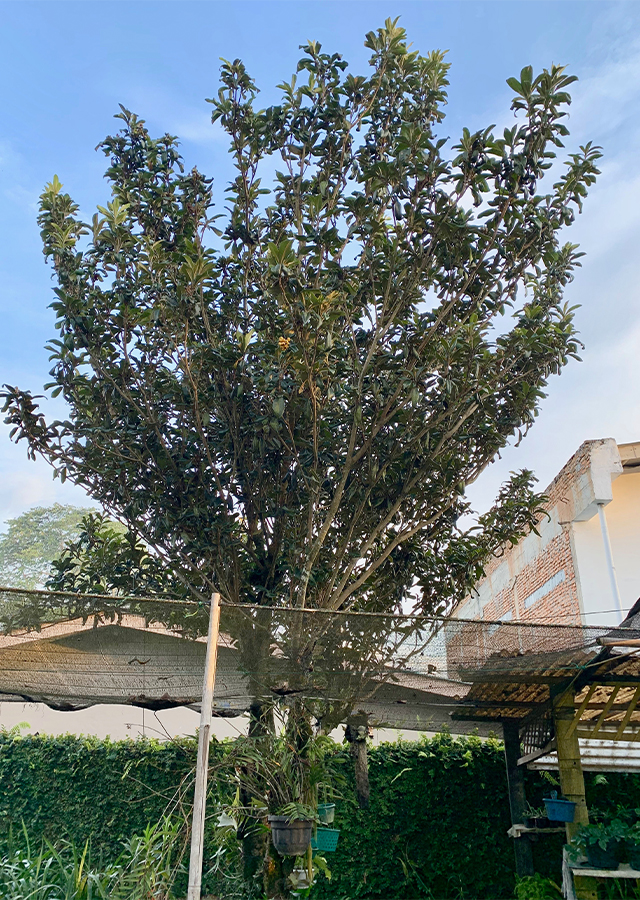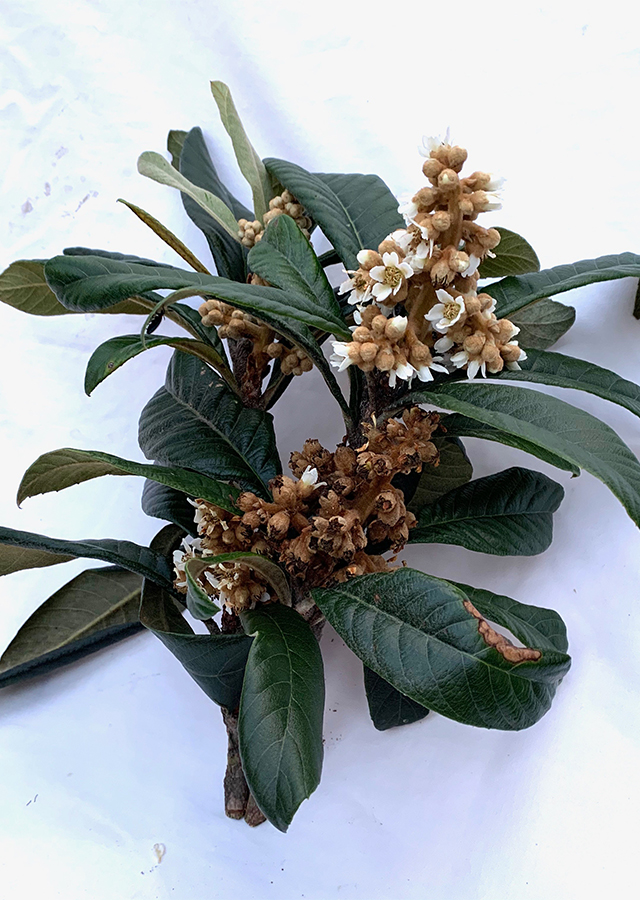Traditional Herbs from Rhaphiolepis bibas
irritated_skin_or_swelling
- Pick enough fresh loquat leaves.
- Pound until smooth or crushed.
- Place it on the affected area.
What is Rhaphiolepis bibas Looks like??



Parts of Rhaphiolepis bibas that could be used
- Leaves
- Seeds
- Flowers
- Fruit
Rhaphiolepis bibas Distribution
Originates from the southeastern Chinese highlands and is also widely cultivated in Japan. Loquats can grow throughout subtropical and tropical areas. Distribution in Indonesia, biwa is often found in North Sumatra (Karo, North Tapanuli, Simalungun, Toba Samosir, and Dairi), West Java (Cianjur), North Sulawesi (Tondano). Chinese people use the leaves in traditional medicine. The fruit can be consumed both fresh and processed.Agroecology of Rhaphiolepis bibas
It grows well in tropical areas in the highlands at an altitude of 700-2,000 m above sea level, with an air temperature of 21-27 °C, rainfall in the range of 600-1,600 mm/year.
Morphology of Rhaphiolepis bibas
- Stems are woody, rough with a stem circumference reaching 39\u201391.5 cm depending on the age of the plant.
- Leaves\u00a0lanceolate, 9-25 cm long, 4-6 cm wide dark green, shiny on the upper surface, the lower part is slightly white, hairy like rust, thick and stiff, the arrangement of the veins is pinnate.
- Flowers are panicle-shaped, at the ends of the twigs, number of flowers per panicle 57\u2013184 flower buds, and fragrant.
- Fruits are in clusters, oval, round or oblong. Seeds weigh 0.24\u20131.96 g, brown.
Cultivation of Rhaphiolepis bibas
Propagation is carried out generatively (seeds) and vegetatively (shoot grafting, grafting and grafting).
Rhaphiolepis bibas, more details :
Chemical Content of Rhaphiolepis bibasCarotenoids, folate, phenolics, chlorogenic acid, triterpenoids (ursolic acid), tannins, amygdalin, citric acid, tartaric acid, succinic acid, cryptoxanthin, β- carotene, neo-β- carotene, flavonoids.
Benefits of Rhaphiolepis bibas
Maintains eye health, immunity, cell growth, improves heart health, regulates blood pressure, reduces inflammation, cures diarrhea, heals wounds, prevents throat irritation, cures fever, treats skin irritation or swelling.
Simplisia of Rhaphiolepis bibas
- Wash the loquat leaves until they are clean of soil and other dirt, then drain them.
- Dry the leaves in a drying cupboard until the leaves are dry (it is indicated that when the leaves are crushed they are brittle).
- Crush them with a blender then sift them until they form a powder.
- Put it in a plastic bag with silica gel and store it at room temperature.
Another Facts for Rhaphiolepis bibas :
Synonym of Rhaphiolepis bibasCrataegus bibas Lour.Eriobotrya japonica (Thunb.) Lindl.Mespilus japonica Thunb.
Habitus of Rhaphiolepis bibas
Bush. Annual tree, reaching 5-10 m high
Habitat of Rhaphiolepis bibas
- Forest
- Mountains
No comments:
Post a Comment